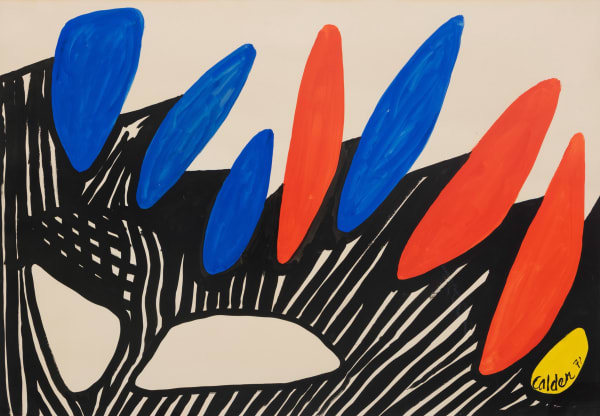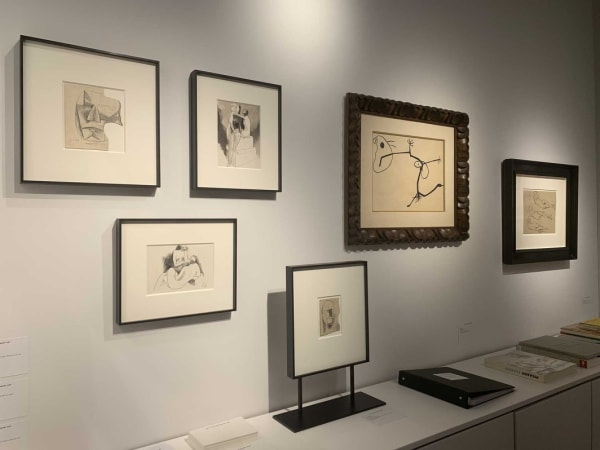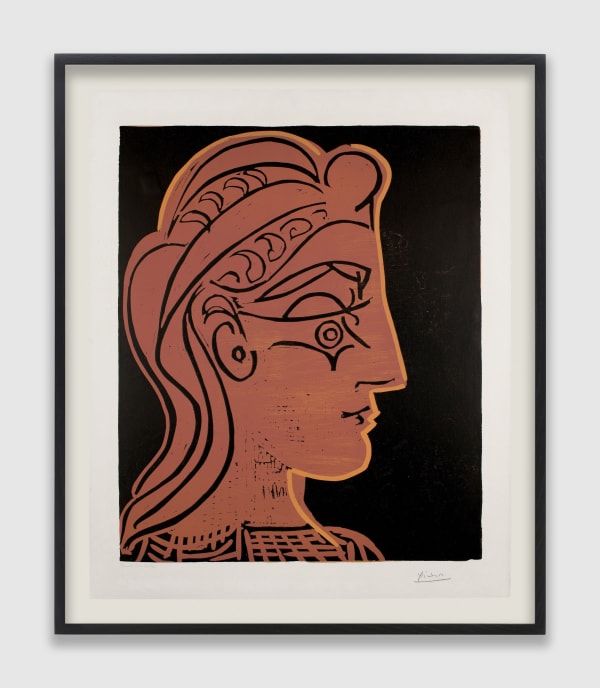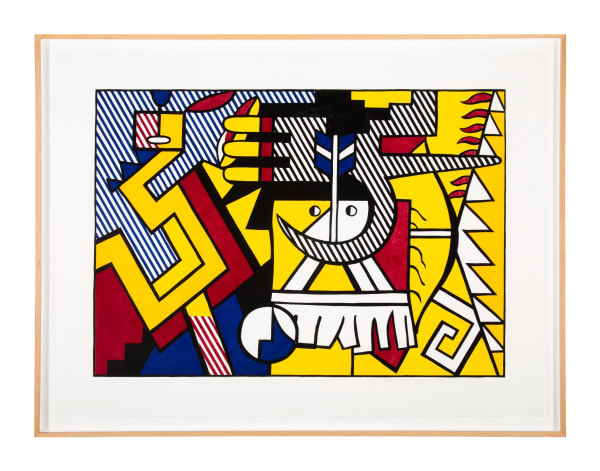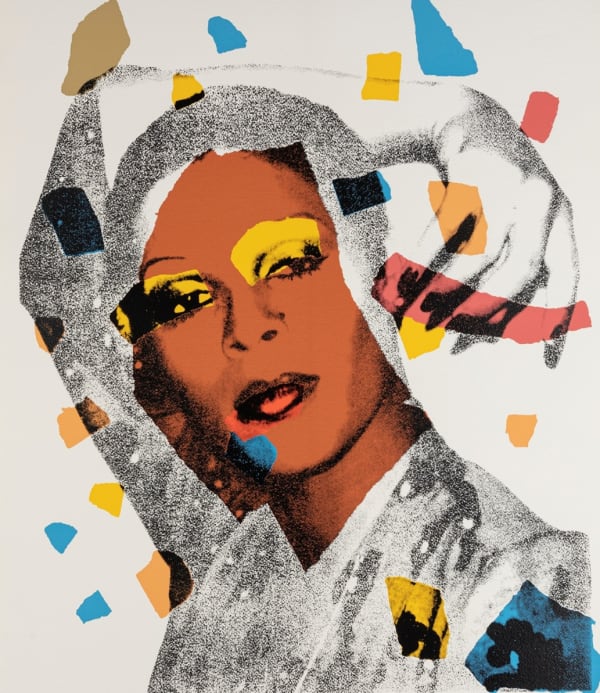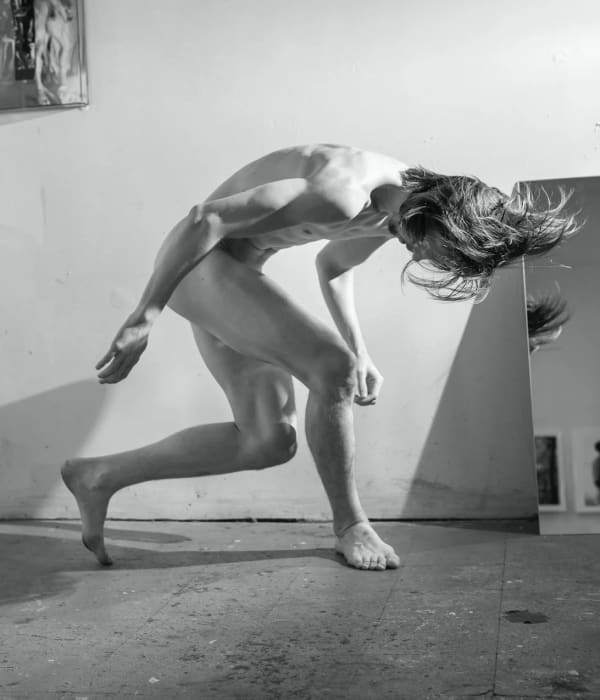“A simple line painted with the brush can lead to freedom and happiness.”
Joan Miró (Barcelona, Spain, 1893—Palma, Spain 1983) is a ground-breaking figure in 20th century art, famous for his declaration of the need to assassinate painting as a result of his dislike of bourgeois art. Born in Barcelona, he briefly studied business before dedicating himself to art. He initially created works inspired by Fauvism and Expressionism before going to Paris for the first time in 1920. There he met artists including André Masson, Max Ernst, and Jean Arp and began to create the Surrealist-inspired works for which he is best known, featuring expressive color, biomorphic shapes, curving lines, and his pictorial sign language. After fleeing the Nazis and returning to Spain in the early 1940s, he worked on his famous Constellation series, consisting of dots representing stars and imagery such as women, birds, and the moon. Miró began to gain international acclaim as a result of a 1941 retrospective of his work at the Museum of Modern Art in New York and his inclusion in the 1947 International Surrealist Exhibition in Paris, ultimately having a great influence on the Abstract Expressionists, who likewise impacted his later works. He also created prints, tapestries, murals, sculpture, and over 250 illustrated books.
-

From Paris to New York
Transformations in Printmaking 30 Jul - 24 Sep 2021This online viewing room begins with the growth of printmaking in early 20th century Paris, covers the war and interwar years in Europe, and goes up to and beyond the...Read more -

Joie de vivre
28 Apr - 31 May 2020Zeit Contemporary Art is pleased to present Joie de vivre, an online viewing room that brings together work by modern, post-war and contemporary artists who, in times of crisis, have...Read more
-
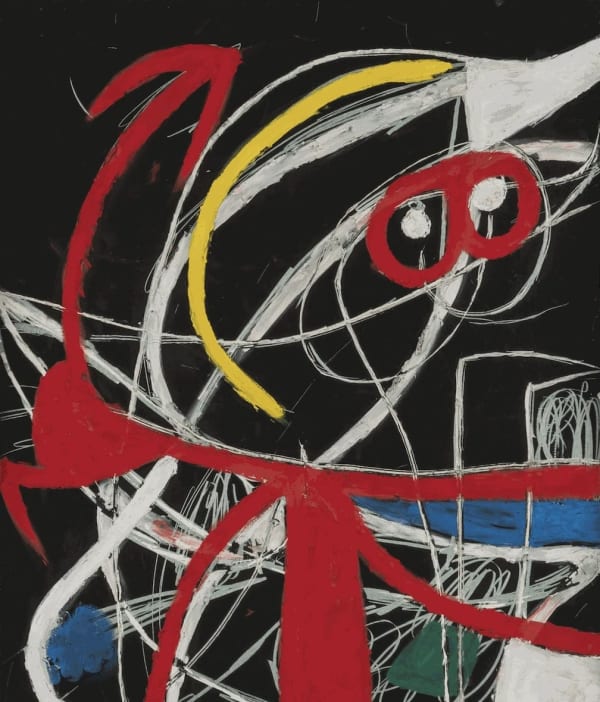
Presenting Joan Miró's Femme, oiseaux
A Masterwork from 1976 April 1, 2022Read more -
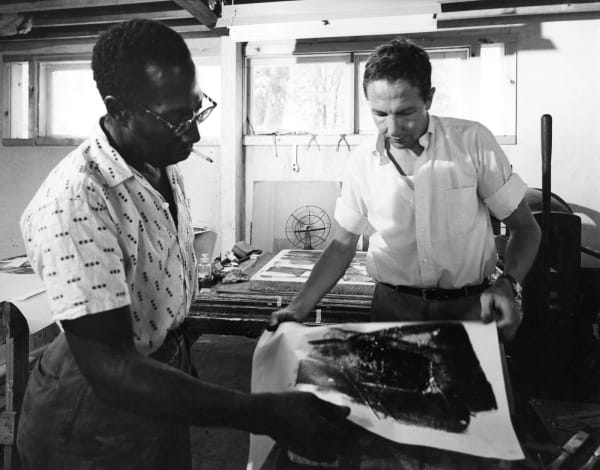
In Conversation with Larissa Goldston
Universal Limited Art Editions (ULAE) September 22, 2021Universal Limited Art Editions (ULAE) played a pioneering role of the greatest significance in the development of printmaking in the United States. Originally founded by...Read more
-

A Voyage Through Drawing at Salon du Dessin in Paris
Anna Mikaela Ekstrand, Cultbytes, March 23, 2024 -

Les anciens font la loi au Salon du Dessin
Jean-Marie Wynants, Le Soir, March 22, 2024 -

Au Salon du dessin, la version intime des œuvres célèbres
Judith Benhamou-Huet, Les Echos. Le Quotidien de L'économie, March 22, 2024 -

Salon du dessin à Paris: les stands à ne surtout pas manquer cette année
Guy Boyer, Connaissance des arts, March 19, 2024 -

Zeit Contemporary Art Showcases The History of Modern Prints
Annabel Keenan, Cultbytes, September 18, 2021 -

From Paris to New York: Transformations in Printmaking
Wall Street International Magazine, September 4, 2021 -

Transformations in Printmaking Surveyed at Zeit Contemporary Art
Eli Anapur, Widewalls Magazine, August 13, 2021 -

From Paris to New York
Art Plugged, July 30, 2021 -

From Henri Matisse to Carmen Herrera, Transformations in Printmaking at Zeit Contemporary Art
Artfixdaily, July 30, 2021 -

“Joie de Vivre” Instills Creativity, Joy, and Stillness Amidst Chaos
Anna Mikaela Ekstrand, Art Zealous, May 21, 2020 -

The Joie de Vivre of Art
Barnebys Magazine, May 17, 2020 -

The Art of Joy: Online Viewing Room Focuses on Positive Emotions
ARTFIXDAILY, April 28, 2020






